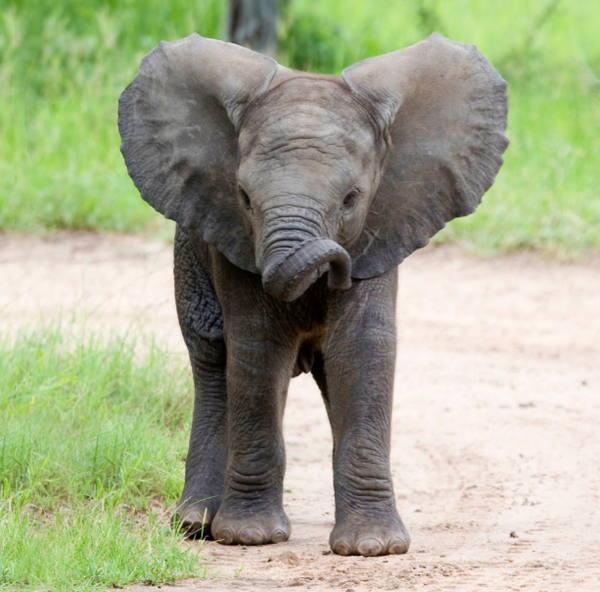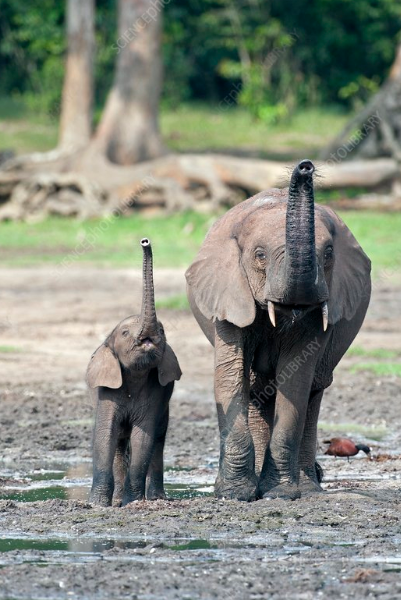African forest elephants
STATUS: Critically Endangered
HEIGHT: 8-10 feet
WEIGHT: 2-5 tons
HABITATS: dense tropical forests
The African forest elephant is a distant cousin of the African savanna elephant. They live in West and Central Africa's lush rainforests. Traditional counting methods such as eye identification are impossible due to their affinity for deep woodland environment. Dung counts—an analysis of the density and distribution of feces on the ground—are commonly used to estimate their population.

African forest elephants are smaller than the other African elephant species, African savanna elephants. Their tusks are straighter and point downward, and their ears are more oval-shaped (the tusks of savanna elephants curve outwards). The size and shape of the skull and skeleton are also different. Forest elephants also reproduce at a slower pace than savanna elephants, thus they cannot recover from population decreases as quickly. Gabon and the Republic of Congo are their last strongholds, with lesser concentrations in other African countries (Cameroon, Central African Republic, Equatorial Guinea) and west African countries (Côte d'Ivoire, Liberia, and Ghana).
African woodland elephants forage on leaves, grasses, seeds, fruit, and tree bark in family groups of up to 20 members. Forest elephants have an important role in propagating many tree species, particularly the seeds of huge trees with high carbon content, because their diet is dominated by fruit. As a result, they are known as the "forest mega-gardener." They gather at mineral-rich waterholes and mineral licks throughout the forest to augment their diet with minerals.
WHY THEY MATTER
Forest elephants live in deep woods and are necessary for the germination of many rain forest trees. After passing through the elephant's digestive tract, the seeds of these trees germinate.
Due to the conversion of forests for agriculture, livestock husbandry, and human infrastructure, both African elephant species are threatened by habitat loss and fragmentation. As a result, conflict between humans and elephants has escalated.
The most urgent threat to African woodland elephants is ivory poaching. Between 2002 and 2011, their populations fell by 62 percent, and their geographic range shrank by 30 percent. As a result of this deteriorating tendency, the IUCN designated the African forest elephant Critically Endangered in 2021.

FRAGMENTATION AND HABITAT LOSS
As human populations rise, land is converted for agriculture, settlements, and development, African elephants have less space to roam than ever before. The range of elephants shrank from three million square miles in 1979 to little over one million square miles in 2007. Commercial logging, biofuel plantations, and extractive industries such as logging and mining not only degrade habitat, but also provide poachers with access to distant elephant woods. Poverty, military conflict, and civil conflict displacement all contribute to habitat loss and fragmentation. All of these factors confine elephants to smaller islands within protected areas, limiting their freedom to move.
HUMAN-ELEPHANT CONFLICT
People and elephants are increasingly coming into contact with each other as habitats shrink and human populations grow. Damage to crops and settlements can become prevalent where farms border elephant habitat or straddle elephant migration pathways. This frequently results in elephants losing battles. People may be trampled while trying to preserve their livelihoods, and game guards frequently shoot "problem" elephants, resulting in death on both sides.
Your post was upvoted and resteemed on @crypto.defrag